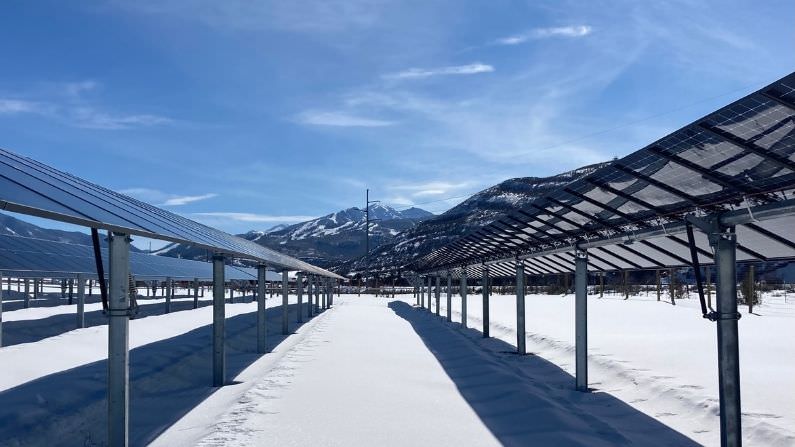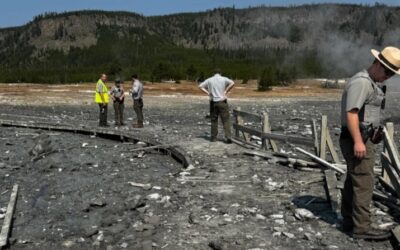This story is part of a collaboration with Rocky Mountain Community Radio focusing on the transition away from fossil fuels across the Mountain West.
In 2020, Holy Cross Energy, a utility cooperative, established its “100×30” plan to provide 100% renewable energy to its 43,000 members by 2030. Holy Cross is in development on a number of solar projects to try to reach this goal.
Over the past five years, Holy Cross research engineer Chris Bilby has been working with a team to get a solar farm up and running near Aspen in Woody Creek. In early October, the solar farm — located eight miles outside of Aspen — began producing energy.
The project, called Pitkin Solar, sits on 35 acres once used as a wastewater sludge field by the Aspen Consolidated Sanitation District. Bilby said the area is a good plot for solar panels because it can’t be used for residential or commercial construction.
“It’s almost like what it was meant to become,” Bilby said.
The solar farm provides 10-12 gigawatt-hours of energy over the course of a year, which is enough to power roughly 900 homes. The renewable energy generated at Pitkin Solar contributes to the “100×30” plan. If the plan succeeds, all of the electricity from Holy Cross will come from renewable energy sources such as wind turbines, solar panels, hydroelectric dams and methane-capture plants.
Sam Whelan, manager of power supply for Holy Cross, said the plan sets them apart from other utilities.
“One of our company goals is to lead the transition to the renewable-energy future,” Whelan said. “Let’s get a goal out there that’s loftier than a lot of these 70-80% goals that we’ve seen across the industry.”
Whelan said Holy Cross can be this aspirational because it has more flexibility with its contracts than other utilities have. Last year, 47% of Holy Cross’ energy portfolio was renewable, which is almost halfway toward its goal.
“Let’s see if we can accomplish it,” Whelan said. “And do it in a way that’s responsible and hopefully pave the way and help show others how it can be accomplished as well.”
When Holy Cross eventually provides 100% renewable energy to its members, that doesn’t mean its operations will be completely carbon-free. Methane capture, woody biomass and hydroelectric dams all produce greenhouse gases, even though they are renewable-energy sources.
Beatriz Soto, director of Protégete, a Conservation Colorado program that engages the Latino community in leading climate solutions, said, “Clean energy is absolutely a part of the solutions for our climate crisis.”
She also said the “100×30” plan is a bold, important goal, but that renewable-energy sources that continue to emit carbon are just the lesser of two evils.
“These are temporary solutions and… we have to keep pushing forward and pushing our technology to have absolutely net-zero clean energy,” Soto said. “That is our future.”
Holy Cross also owns 8% of the Comanche 3 coal plant in Pueblo. According to The Colorado Sun, Comanche 3 is the biggest source of pollution in Colorado. Holy Cross sells its share of the energy produced by this coal-burning power plant to Guzman Energy, a wholesale power provider, so those emissions are not a part of its portfolio.
However, that carbon is still entering the atmosphere.
“There’s only so much we can do to influence what happens with that plant on a large scale,” Whelan said. “We’re a minority owner. It’s one of the challenges that we face. ”
Holy Cross is focusing on what they can control by building new solar farms and microgrids in its service area. The Pitkin Solar project in Woody Creek will soon be joined by solar farms in Glenwood Springs, Silt and Parachute. Bilby said that Pitkin Solar can set a powerful example.
“I know this is the future,” Bilby said. “This is coming. This is a good project to put into the ground to show that we can do this, that we can do this in places like Aspen. It’s really an asset that the community is going to have for 15, 20, 30 years.”





